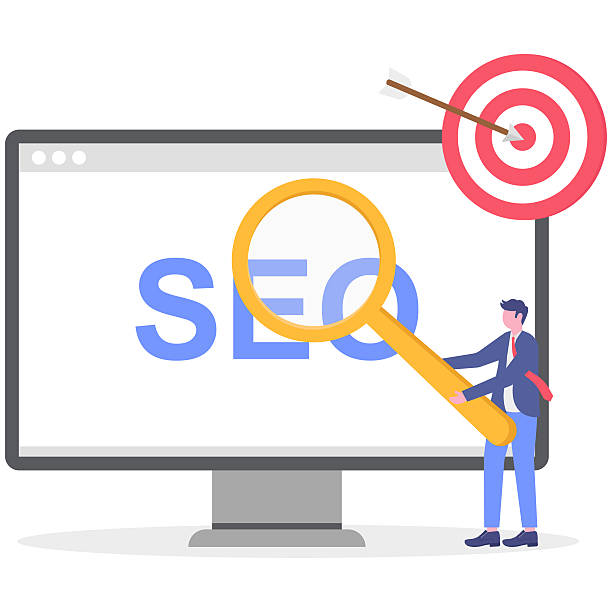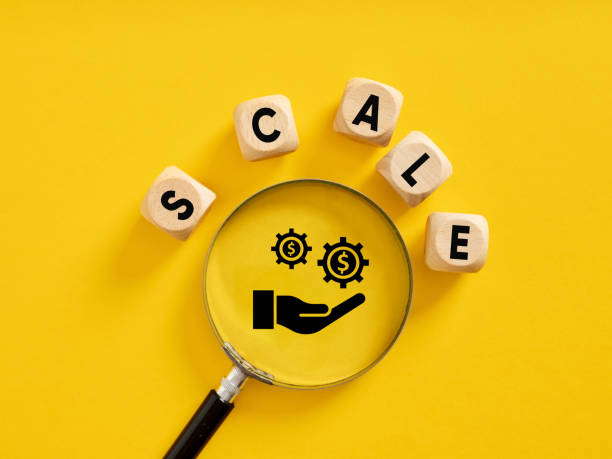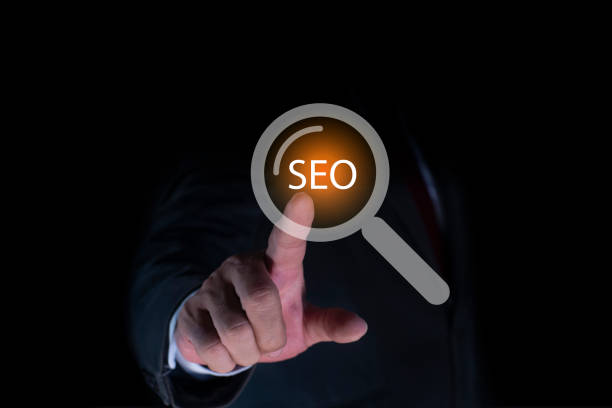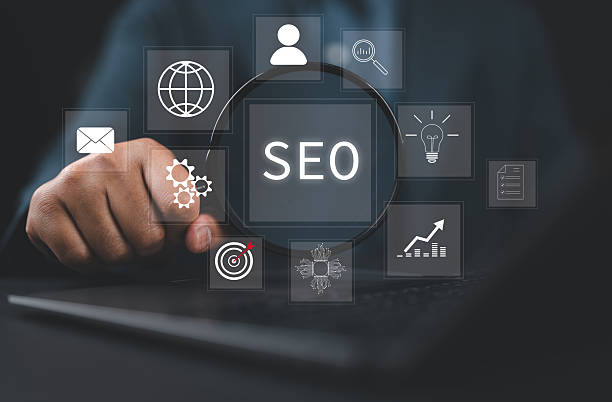Chapter One: What is Internal SEO and Why is it Important?

#Internal_SEO or #On-Page_SEO is a set of optimization actions performed within your website to improve its ranking in search engines and attract more organic traffic.
This process includes optimizing content, site structure, and HTML elements.
The importance of Internal SEO lies in helping search engines better understand the topic and value of your content.
This better understanding leads to higher rankings for relevant keywords.
Without strong Internal SEO, even the best content might not be seen in search results.
It is a vital part of the overall Search Engine Optimization (SEO) strategy that allows your website to powerfully compete.
This educational section will help you gain a deeper understanding of the fundamentals of this topic.
The ultimate goal of Internal SEO is to build websites that are optimized for both users and search engine bots.
An internally optimized site provides a better user experience, which in turn converts into positive signals for search engines.
Improving loading speed, mobile compatibility, and proper information architecture are all important sub-categories of this type of optimization.
In fact, Internal SEO sets the stage for the success of Off-Page SEO and technical SEO strategies.
This explanatory and analytical section provides the initial steps for understanding this field.
Are you bothered by losing customers who visit your site to make a purchase?
Rasaweb is your specialized solution for having a successful online store.
✅ Significant increase in your online sales
✅ Building trust and professional branding with customers⚡ Get free consultation from Rasaweb specialists!
Chapter Two: Keyword Research for Successful Internal SEO

Keyword research is the backbone of any successful Internal SEO strategy.
This process involves identifying the phrases and words that users use when searching for products, services, or information related to your business.
The goal of this research is to find keywords that have both a good search volume and reasonable competition.
Various tools like Google Keyword Planner, Ahrefs, and Semrush can assist you in this area.
The focus should be on Long-Tail Keywords, as these usually indicate a more specific search intent and have less competition.
For example, instead of “SEO,” use “Internal SEO tutorial for small businesses.”
This approach directs more targeted traffic to your website.
Choosing the right keywords is the foundation for structuring content and optimizing the internal elements of your pages.
This educational and analytical section helps you identify effective keywords.
After identifying keywords, you should naturally incorporate them into your content.
Keyword Density is no longer as important as it used to be; what matters is the natural and relevant use of keywords that do not harm the user experience.
This includes using synonyms and related LSI (Latent Semantic Indexing) keywords.
Keyword research is crucial not only for optimizing text content but also for titles, meta descriptions, and URLs.
This is a specialized and guidance step that requires careful analysis.
This step allows you to create a comprehensive strategy for Internal SEO.
Chapter Three: Content Optimization for Internal SEO

Content is king, but optimized content is a successful king.
Content optimization for Internal SEO involves ensuring that your content is not only useful and engaging for users but also understandable and rankable for search engines.
This includes the natural use of primary and secondary keywords in the text, headings (H1, H2, H3, etc.), and paragraphs.
Your content should be comprehensive, accurate, and unique.
Strictly avoid plagiarism.
Content length also matters; generally, longer and deeper content has a better chance of ranking high, provided its quality is maintained.
Using multimedia elements like images, videos, and infographics can enhance content appeal and increase user dwell time on the page.
This explanatory and analytical section emphasizes the importance of content quality and structure.
Ensure your content answers user questions and provides real value.
This thought-provoking content should be able to address the user’s informational needs.
Types of Content and Their Impact on Internal SEO
| Content Type | Goal | Impact on Internal SEO |
|---|---|---|
| How-to Guides | Step-by-step guidance to solve a problem | Attracts traffic with question-based keywords, increases credibility and trust. Very useful for educational Internal SEO. |
| News Blog Posts | Inform about events or trends | Attracts immediate traffic, improves content freshness and positive signals to the search engine. This type of content is news-related. |
| Product/Service Pages | Selling or introducing products/services | Optimization for commercial keywords, increasing conversion rates, and providing comprehensive information. Internal SEO for these pages should be done specially. |
| Infographics and Visual Content | Presenting complex information simply and engagingly | Increases sharing, improves user experience, attracts backlinks (if embedded). Optimizing Alt text for images is important for Internal SEO. |
| Entertaining Content | Attracting and engaging the audience | Increases dwell time on the site, reduces bounce rate, and builds loyalty. Although it may not be directly searched for specific keywords, it helps make the site entertaining. |
Chapter Four: Optimizing Meta Tags

Meta tags, including the Title Tag and Meta Description, are among the most important Internal SEO elements that directly affect click-through rate (CTR) and search engine understanding of your content.
The title tag (H1) is the main title of the page and should include your primary keyword and accurately describe the page’s content.
This tag is crucial for users in search results as well as for search engines.
The optimal length for a title tag is typically between 50 and 60 characters to be fully displayed in search results.
The Meta Description is a short summary of the page’s content displayed below the title in search results.
Although meta descriptions do not directly impact ranking, by encouraging users to click on your link, they can indirectly affect your Internal SEO and ranking.
These descriptions should be engaging, contain keywords, and encourage users to take a specific action.
The ideal length for a meta description is about 150-160 characters.
Optimizing these tags requires a specialized understanding of user behavior and search engine algorithms.
Using keywords naturally in these tags and writing a thought-provoking or explanatory content in the meta description is very effective for attracting user attention.
This is an important educational step that is often overlooked.
Did you know that 85% of customers check your company’s website before any interaction?
With Rasaweb, build a corporate website that truly reflects your credibility.
✅ Increase customer credibility and trust
✅ Attract high-quality leads
⚡ Get free website design consultation now!
Chapter Five: URL Structure and Permalinks

URL structure and the use of Permalinks are another important aspect of Internal SEO that is often overlooked.
An optimized URL is short, descriptive, and includes the page’s main keywords.
This not only helps search engines better understand the page’s topic but also makes it more readable and understandable for users.
Avoid irregular URLs that include numbers and meaningless characters.
For example, instead of “yoursite.com/?p=123”, use “yoursite.com/blog/seo-internal-guide”.
Using hyphens (-) to separate words instead of underscores (_) is recommended, as search engines recognize hyphens as word separators and underscores as word joiners.
This guidance helps you create optimized URLs.
Hierarchical URL structure is also important; that is, the URL should indicate a logical path to the content.
For example, if you have a blog, article URLs might include the category name (e.g., yoursite.com/category/article-title).
This structure not only helps Internal SEO but also allows users to better understand their location within your website.
This is a specialized step in optimization.
Chapter Six: Internal Linking Strategy

Internal Linking is a process in which different pages of your website are linked to each other.
This part of Internal SEO plays a vital role in distributing ranking power (Link Equity) across the site and improving crawlability for search engines.
When a strong page links to another page on the same website, it transfers a portion of its power to the destination page.
This helps search engines better understand the value and relationship between different pages.
Additionally, internal links help users navigate your website easily and discover more relevant content, which leads to increased dwell time on the site and reduced bounce rate.
When internal linking, use descriptive and relevant Anchor Texts.
Instead of “click here,” use phrases like “Comprehensive Internal SEO Guide.”
This educational and guidance helps you employ the best practices.
Also, give more internal links to pages you want to rank higher, but not excessively.
A proper internal linking strategy strengthens your website’s information architecture and shows search engines which of your pages are more important.
This is an analysis of the value flow within your site.
This part of internal SEO is very important for ranking stability and power.
Chapter Seven: Image Optimization
![]()
Images play an important role in the visual appeal of your website, but if not optimized correctly, they can slow down page loading speed and negatively impact your Internal SEO.
Image optimization involves several key steps:
First, reduce the File Size of images as much as possible, without significantly compromising their quality.
You can use online image compression tools or image editing software.
Second, choose the appropriate format (Image Format).
Formats like WebP for the web, JPEG for photos, and PNG for images with transparency or simpler graphics are usually good options.
Third, use meaningful File Naming that includes keywords relevant to the image.
Instead of “IMG_001.jpg”, use “internal-seo-guide.jpg”.
Fourth, add Alt Text (Alternative Text) for each image.
Alt Text is a brief description of the image content displayed to users if the image fails to load, and more importantly, it helps search engines understand the image.
This text should include keywords but not in a spammy way.
This is a specialized step for Internal SEO.
Image Optimization Techniques for Internal SEO
| Technique | Explanation | Importance in Internal SEO |
|---|---|---|
| Compression | Reducing image file size without noticeable loss of quality. | Increases page loading speed, improves user experience and ranking. |
| Meaningful Naming | Using descriptive and keyword-rich names for image files. | Helps search engines understand image content and improves image SEO. |
| Alt Text (Alternative Text) | Adding text descriptions for images (important for accessibility and SEO). | Helps crawlers understand the image and rank in image search. |
| Appropriate Dimensions | Using suitable image dimensions for web display. | Prevents browser resizing which leads to reduced speed. |
| Lazy Loading | Loading images only when the user scrolls to that part of the page. | Reduces initial page load time, improves Core Web Vitals. This is a specialized technique for Internal SEO. |
Chapter Eight: Schema Markup and Structured Data

Schema Markup is a type of code added to your website that helps search engines better understand your content and display it more richly in search results (Rich Snippets).
This can significantly increase your click-through rate (CTR), even if your ranking doesn’t change.
Schema.org provides a collection of shared vocabularies that webmasters can use to mark up their content.
Examples of structured data types that you can use Schema Markup for include: articles, reviews, products, events, recipes, and local businesses.
By correctly implementing schema, you can display specific information such as star ratings for reviews, product prices, or event times directly in search results.
This is a specialized and advanced aspect of Internal SEO that requires precision in implementation.
Using Google’s Structured Data Testing Tool to validate your code is highly recommended.
This analytical and guidance helps you benefit from this advanced technique.
This educational effort ultimately leads to increased visibility and attractiveness of your website in search results.
Falling behind in competition with large online stores?
Rasaweb makes your business online with professional e-commerce website design and increases your market share!
✅ Increase brand credibility and customer trust
✅ Easy shopping experience leads to more sales
⚡ Act now to get free website design consultation!
Chapter Nine: Technical Aspects of Internal SEO

In addition to content and visual elements, technical aspects of a website also play a very important role in Internal SEO.
Page Speed is one of the most important factors; faster pages provide a better user experience and are preferred by search engines.
You can use tools like Google PageSpeed Insights to analyze and improve your site’s speed.
Mobile-Friendliness is also crucial, as a large portion of searches are now performed via mobile devices.
Your website must be responsive and display well on different screen sizes.
Crawlability and Indexability mean that search engines can easily access, read, and index all important pages of your website in their database.
The robots.txt file and XML Sitemap are tools that help you in this regard.
Ensuring the absence of Broken Links and inappropriate redirects is also important for Internal SEO and user experience.
This part of Internal SEO requires specialized and technical knowledge.
This is a deep analytical step to find and fix hidden site issues.
Chapter Ten: Monitoring and Analyzing Internal SEO

The final stage in a comprehensive Internal SEO strategy is continuous monitoring and performance analysis.
SEO is not a one-time process; it requires continuous improvement and updating.
Using tools like Google Search Console and Google Analytics is essential for tracking keyword rankings, organic traffic, bounce rate, dwell time on page, and other key metrics.
Google Search Console helps you identify crawl and index issues, mobile problems, and overall site performance in search results.
Google Analytics provides deep insights into user behavior on your website; where they came from, what pages they visited, and how long they spent on the site.
By analyzing this data, you can identify the strengths and weaknesses of your Internal SEO strategy and make data-driven decisions for future improvements.
This is an analytical and guidance process for sustainable success.
Continuous monitoring allows you to stay aligned with changes in search engine algorithms and new trends, and to utilize the full potential of Internal SEO for your business growth.
It is fun to see how small changes can lead to big results.
Frequently Asked Questions
| Row | Question | Answer |
|---|---|---|
| 1 | What is Internal SEO (On-Page SEO)? | Internal SEO refers to a set of actions performed within a website (on its pages) to improve the site’s ranking in search engine results. This includes optimizing content, site structure, and HTML codes. |
| 2 | Why is Internal SEO important? | Internal SEO helps search engines better understand the page content and determine whether that page is relevant and valuable for user searches. This better understanding leads to higher rankings. |
| 3 | What is the first and most important step in Internal SEO? | Keyword Research is the most important initial step. By finding appropriate keywords, targeted content relevant to user needs can be produced. |
| 4 | What is the role of the Title Tag in Internal SEO? | The title tag is one of the most important ranking factors and should include the main keyword. This tag is displayed as the page title in search results and influences the click-through rate (CTR). |
| 5 | What is the importance of Meta Description? | The meta description does not directly affect ranking, but by providing an attractive summary of the page content in search results, it can entice users to click and thus increase the click-through rate (CTR). |
| 6 | Why is using headings (H1, H2, etc.) in content important? | Headings help structure content and improve readability for users and search engine crawlers. Using keywords in headings also helps search engines better understand the topic. |
| 7 | What does Image Optimization in Internal SEO include? | It includes compressing images to reduce size, using descriptive and relevant file names, and filling the Alt tag (alternative text) with relevant keywords to help search engines understand the image content. |
| 8 | What is Internal Linking in Internal SEO? | Internal linking refers to creating links between different pages of a website. This helps distribute page authority (Link Equity), improves user experience, and assists search engine crawlers in discovering new pages. |
| 9 | Why is Page Speed important for Internal SEO? | Page speed is a direct ranking factor and significantly impacts user experience. Slow pages can lead to an increase in bounce rate and a decrease in user engagement. |
| 10 | What role does quality content play in Internal SEO? | High-quality, comprehensive, unique, and valuable content for the user is the core of Internal SEO. This content not only attracts and retains users but also sends positive signals to search engines and helps with better rankings. |
And other advertising agency Rasa Web services in the field of advertising
Smart Marketplace: An innovative platform for improving campaign management with intelligent data analysis.
Smart Brand Identity: An innovative platform for improving click-through rates with intelligent data analysis.
Smart Digital Branding: An effective tool for attracting customers through engaging UI design.
Smart Conversion Rate Optimization: A fast and efficient solution for increasing sales by focusing on optimizing key pages.
Smart Content Strategy: Designed for businesses seeking to manage campaigns through engaging UI design.
And over a hundred other services in the field of internet advertising, advertising consultation, and organizational solutions
Internet Advertising | Advertising Strategy | Advertorials
Sources
Comprehensive Internal SEO GuideSEO Keyword ResearchWebsite Structure OptimizationComplete SEO Guide
? Ready to transform your business in the digital world? Rasaweb Afarin Digital Marketing Agency, with expertise in responsive website design, SEO optimization, and professional social media management, assists you on your path to growth and achieving big goals.
📍 Tehran, Mirdamad Street, next to Bank Markazi, Southern Kazeroon Alley, Ramin Alley, No. 6



